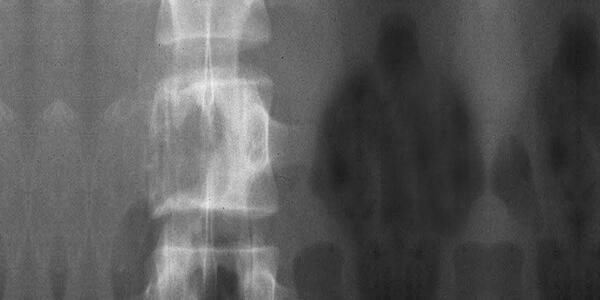Spinal tumors are abnormal growth of tissue located in the spinal cord. They may be cancerous or noncancerous. Tumors that affect the bones of the spine (vertebrae) are known as vertebral tumors. Tumors that begin within the spinal cord itself are called spinal cord tumors.
[the_ad id=”13371″]
Types
There are two main types of tumors that may affect the spinal cord:
Intramedullary tumors begin in the cells within the spinal cord itself, such as astrocytomas or ependymomas.
Extra medullary tumors develop within the supporting network of cells around the spinal cord. Although they don’t begin within the spinal cord itself, these types of tumors may affect spinal cord function by causing spinal cord compression and other problems. Examples of extramedullary tumors that can affect the spinal cord include schwannomas, meningiomas and neurofibromas.
Symptoms
Depending on the location and type of spinal tumor, different signs and symptoms can develop, especially as a tumor grows and affects your spinal cord, surrounding nerves or blood vessels. Spinal tumors often cause symptoms by pressing on the spinal nerves. Common symptoms include back and neck pain, numbness, and tingling and weakness in the arms or legs or both.
Other symptoms can be clumsiness and difficulty walking. Tumors in the lower part of the spinal cord may cause loss of bladder and bowel control (incontinence).Back pain is a common early symptom of both noncancerous and cancerous spinal tumors. Pain may also spread beyond your back to your hips, legs, feet or arms and may become more severe over time in spite of treatment.
Cause
There is no specific cause for the development of spinal tumors. Defective genes can play a role or may be due to exposure to certain chemicals. In some cases, spinal cord tumors are linked to known inherited syndromes, such as neurofibromatosis 2 and von Hippel-Lindau disease.
Diagnosis
If spinal tumor is suspected, the following test can help to proper diagnosis and pinpoint the tumor location.
MRI scan: MRI uses a powerful magnet and radio waves to produce images of your spine. MRI accurately shows the spinal cord and nerves and yields better pictures of bone tumors than computerized tomography (CT) scans do.
CT scan: This test uses a narrow beam of radiation to produce detailed images of your spine. Sometimes it may be combined with an injected contrast dye to make abnormal changes in the spinal canal or spinal cord easier to see.
Biopsy: The only way to determine the precise nature of a spinal or vertebral tumor is to examine a small tissue sample (biopsy) under a microscope. The biopsy results will help determine treatment options.
Treatment
The goal of spinal tumor treatment is to eliminate the tumor completely, but this goal may be complicated by the risk of permanent damage to the spinal cord and surrounding nerves.
Treatment options for most spinal tumors includes:
Surgery
The aim of the surgery is to remove the tumor without weakening the spine. Sometimes it’s possible to remove spinal cord tumors completely, especially if the tumor is on the outer part of the spinal cord. If the tumor cannot be removed completely, it’s often possible to remove part of it. This can help slow down the progress of the tumor.Newer techniques and instruments allow neurosurgeons to reach tumors that were once considered inaccessible. The high-powered microscopes used in microsurgery make it easier to distinguish tumor from healthy tissue.
Radiation therapy
Radiotherapy uses high-energy rays to destroy the cancer cells, while doing as little harm as possible to normal cells.
It’s usually given by directing radiotherapy rays at the tumor from outside the body. This is called external radiotherapy. It’s used to treat spinal tumors that have not been completely removed with surgery or if the tumor comes back after initial treatment. Sometimes radiotherapy is used as the main treatment when surgery isn’t possible. Radiotherapy can also be used to relieve symptoms, such as pain.
Steroids
Steroids are chemicals naturally produced in the body. They are made by the reproductive organs and the adrenal glands above the kidney. They help control and regulate how the body works. Steroids can be given as tablets or by injection.
They can reduce the swelling that often surrounds spinal tumors. Although steroids do not treat the tumor itself, they are very useful in improving symptoms and making you feel better. They may be used before or after surgery, or before, during or after radiotherapy.
Chemotherapy
Chemotherapy is the use of anti-cancer (cytotoxic) drugs to destroy cancer cells. Chemotherapy is occasionally used for certain types of spinal tumors.
